

Queer Places:
National Academy Museum & School, 1083 5th Ave, New York, NY 10128, Stati Uniti
Royal Academy of Arts, Burlington House, Piccadilly, Mayfair, London W1J 0BD, Regno Unito
Académie Julian, Passage des Panoramas, Paris, Francia
École nationale supérieure des Beaux-Arts, 14 Rue Bonaparte, 75006 Paris, Francia
73 Rue Notre Dame des Champs, 75006 Paris, Francia
41 Boulevard Berthier, 75017 Paris, Francia
Morgan Hall, London Rd, Fairford GL7 4AU, Regno Unito
Farnham House, Church St, Broadway WR12 7AE, Regno Unito
Russell House, Russell Square, Broadway WR12 7BU, Regno Unito
33 Tite St, Chelsea, London SW3 4JP, Regno Unito
14 Fulham Rd, London SW10 9TY, Regno Unito
Brookwood Cemetery, Glades House, Cemetery Pales, Brookwood, Woking GU24 0BL, Regno Unito
Sargent House Museum, 49 Middle St, Gloucester, MA 01930, Stati Uniti
Fairmont Copley Plaza, 138 St James Ave, Boston, MA 02116, Stati Uniti
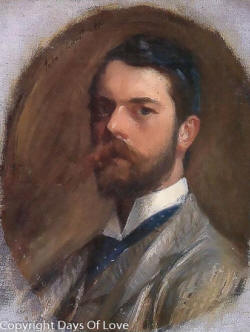 John
Singer Sargent (January 12, 1856 – April 14, 1925) was an American artist,
considered the "leading portrait painter of his generation" for his evocations
of Edwardian era luxury.[1][2]
A certain homoeroticism emerged, made all the more remarkable by the fact that
many prominent artists of this era—including
Thomas Eakins,
F. Holland Day,
John Singer Sargent,
Harriet Hosmer,
Edmonia Lewis, and
Anne Whitney—had intense romantic
attachments with members of their own sex.
John
Singer Sargent (January 12, 1856 – April 14, 1925) was an American artist,
considered the "leading portrait painter of his generation" for his evocations
of Edwardian era luxury.[1][2]
A certain homoeroticism emerged, made all the more remarkable by the fact that
many prominent artists of this era—including
Thomas Eakins,
F. Holland Day,
John Singer Sargent,
Harriet Hosmer,
Edmonia Lewis, and
Anne Whitney—had intense romantic
attachments with members of their own sex.
During his career, Sargent created roughly 900 oil paintings and more than 2,000 watercolors, as well as countless sketches and charcoal drawings. His oeuvre documents worldwide travel, from Venice to the Tyrol, Corfu, the Middle East, Montana, Maine, and Florida. An invert himself, Sargent was a friend of many famous inverts and investigators of inversion: his circle included Henry James, Edmund Gosse, Violet Paget (aka Vernon Lee), Oscar Wilde, Robert de Montesquiou, Dr. Samuel-Jean Pozzi, W. Graham Robertson, Walter Pater, Robert Louis Stevenson, Marc-André Raffalovich, John Addington Symonds, and James McNeill Whistler. John Singer Sargent reputedly exercised a strange power over Henry James, "a great queen-bee," who was "mesmerized by John, as one is mesmerized by an exotic flower."
His parents were American, but he was trained in Paris prior to moving to London. Sargent enjoyed international acclaim as a portrait painter, although not without controversy and some critical reservation; an early submission to the Paris Salon, his Portrait of Madame X, was intended to consolidate his position as a society painter, but it resulted in scandal instead. From the beginning his work was characterized by remarkable technical facility, particularly in his ability to draw with a brush, which in later years inspired admiration as well as criticism for a supposed superficiality. His commissioned works were consistent with the grand manner of portraiture, while his informal studies and landscape paintings displayed a familiarity with Impressionism. In later life Sargent expressed ambivalence about the restrictions of formal portrait work, and devoted much of his energy to mural painting and working en plein air. He lived most of his life in Europe. Art historians generally ignored the society artists such as Sargent until the late 20th century.[3]
Sargent was a lifelong bachelor with a wide circle of friends. Biographers once portrayed him as staid and reticent.[92] However recent scholarship has suggested that he was a private, complex and passionate man with a homosexual identity that shaped his art.[93][94] This view is based on his friends and associations; the overall alluring remoteness of his portraits; the way his works challenge 19th-century notions of gender difference;[95] his erotic and previously ignored male nudes; and some sensitive and erotic male portraits, including those of Thomas E. McKeller, Bartholomy Maganosco, Olimpio Fusco,[96] and that of the handsome aristocratic artist Albert de Belleroche, which hung in his Chelsea dining room.[97][98] Sargent had a long and intense romantic friendship with Belleroche, whom he met in 1882, and who later went on to marry: a surviving drawing hints that Sargent may have used him as a model for Madame X.[94][99]
One of John Singer Sargent's most famous paintings is The Daughters of Edward Darley Boit, which is the pride of the Musuem of Fine Arts of Boston. The Boits met Sargent in the late 1870s. One daughter, Florie Boit, was a lesbian who would eventually settle into a happy Boston marriage with her cousin, Jane Boit Patten. Henry James met Sargent by 1882, the same year Sargent painted the Boit daughters. He was immediately infatuated with the painter and asked the Boits to put in a good work for him. But Sargent was still very attached to his studio mate at the time, Albert de Belleroche, whom Sargent painted a very sensuous painting of that year. "Almost androgynous in appearance, Belleroche displays a sultry sexual presence" and the painting would be the center of attention in Sargent's London dining room for the rest of his life. Six years later Sargent would paint another sensual portrait of a man, the singer George Henschel. It was so wonderfully erotic that a friend asked Sargent how he could put so much emotion into a painting. Sargent replied, "I loved him." When Sargent faced scandal and ruin in Paris for painting the now much admired Portrait of Madame X in 1884, he took James' suggestion to move to London. James wrote a glowing review of Sargent's work in Harper's Magazine in October 1887, setting him up for a portrait painting in New York and Boston. When Sargent arrived in Boston the next month, he stayed with the Boits on Beacon Hill at 65 Mt. Vernon St., next door to Sam Warren, and he painted Fiske Warren's wife and daughter at Fenway Court in 1903.
It has been suggested that Sargent's reputation in the 1890s as "the painter of the Jews" may have been due to his empathy with, and complicit enjoyment of their mutual social otherness.[93] One such client, Betty Wertheimer, wrote that when in Venice Sargent "was only interested in the Venetian gondoliers".[93][100] The painter Jacques-Émile Blanche, who was one of his early sitters, said after Sargent's death that his sex life "was notorious in Paris, and in Venice, positively scandalous. He was a frenzied bugger."[101] The truth of this may never be established.
There were many friendships with women: it has been suggested that those with his sitters Rosina Ferrara, Amélie Gautreau, and Judith Gautier may have tipped into infatuation.[102] In 1882 Sargent also courted for a time Charlotte Louise Burkhardt, the model for Lady with the Rose.[103] But whatever interest Sargent may have had soon dissipated; a year later another artist friend, James Carroll Beckwith, scribbled in his diary: "We have had a long talk on the Louise affair. I am sorry for her but he does not care a straw for her, poor girl."
Given his own skill at the piano, John Singer Sargent was especially inclined to extend his generosity to keyboard virtuosos (such as Percy Grainger, Léon Delafosse, and Gabriel Fauré), with whom he often played four-handed duets.
Sargent's friends and supporters included Henry James, Isabella Stewart Gardner (who commissioned and purchased works from Sargent, and sought his advice on other acquisitions),[104] Edward VII,[105] and Paul César Helleu. When a youthful John Singer Sargent was first launching his career, some of his closest associates were very flamboyant. Most conspicuous among them was Robert de Montesquiou - "the so-called "Prince of Decadence"" - whose incarnation of dandified aestheticism was to Paris what Oscar Wilde's was to London. Another was Samuel Jean de Pozzi, whose sexual exploits were almost as legendary as his pioneering work in the field of gynecology; both aspects of his character were dashingly suggested in Sargent's full-lenght portrait of 1881, Dr. Pozzi at Home. In the summer of 1885, Sargent have these friends (and the composer Prince Edmond de Polignac) a collective letter of introduction to Henry James, who dutifully arranged a dinner for them to meet James Abbott McNeill Whistler for a chance to see the artist's fabled "Peacock Room" in the home of Frederick Richards Leyland, a shipping magnate whose house was at 49 Prince's Gate. According to James, "on the whole nothing that relates to Whistler is queerer than anything else." That all three Frenchmen would later resurface in the masterwork A la recherche du temps perdu) of another gay writer, Marcel Proust, makes the anterior coincidence queerer still.
Isabella Stewart Gardner liked to connect men whom she thought would make a good couple. She introduced Dennis Miller Bunker to John Singer Sargent in 1887, and the two had a very intimate relationship with Sargent reportedly including an image of Bunker in his Frieze of the Prophets in the Boston Public Library as well as producing a picture of Bunker in a bucolic country setting in 1888. Gardner was so proud of the couple that she reportedly kept their pictures side by side in her mansion and one of Bunker's paintings hangs in her museum. As they painted together in the French countryside, Bunker stayed with Sargent. He married in October 1890, but tragically died of meningitis only a few months later in December.
Sometime, when John Singer Sargent met a man he was interested in, he would bring him over to Isabella Stewart Gardner for a visit. One night, for example, Charles Loeffler was the soloist in a performance where he captured the attention of Sargent. Loeffler recalled, "He came into the Artists room that evening and with that irresistible charm of his said a few words which made one rise in one's seld esteem and then arranged for our meeting a few days later at a dinner in a murual friends house (the Gardner's)." This was the beginning of another intimate relationship that resulted in Sargent's portrait of Loeffler. At the same time, Sargent's relationship with Dennis Miller Bunker was heating up and soon Loeffler and Bunker were spending time together, influencing each other's work. Loeffler was best man at Bunker's wedding and Sargent visited Loeffler at his estate in Medfield.
In 1894 John Singer Sargent made a full-lenght portrait of the queer London aesthete W. Graham Robertson (author of Pinkie and the Fairies), where Robertson came out as adoringly idealized. Sargent completed this work at the height of summer, but insisted (despite his sitter's obvious discomfort) that Robertson wear a long, thick overcoat throughout each studio session. "Then I can't wear anything else," the younger man answered, stripping off almost every other piece of his clothing, "much to the satisfaction of the artist, who used to pull and drag the unfortunate coat more and more closely" around him "until it might have draping a lamp post." During one lenghty session, when Robertson grew faint from holding his pose for such an extended period, Sargent grabbed him by the collar and rushed him into the street, seeking to revive him with fresher air. "It was a pity that Oscar Wilde opposite was not looking out the window," Robertson later recalled, "the "wonderful possibilities of Tite Street" were yet unexhausted."
In 1903 Isabella Stewart Gardner was introduced to Abram Piatt Andrew, Jr, by Cecilia Beaux, one of the most popular American painters of the era. Beaux was a native of Philadelphia, where she studied art in addition to taking classes in Paris. Beaux had been the first of a group of lesbians and gay men to move to Eastern Point in Gloucester. Her next door neighbor was Joanna Stewart Davidge, the head of a New York School for girls. The next house down belonged to Andrew. Gardner and Andrew became instant friends and she started spending time in Gloucester. Andrew had been recently appointed a Harvard professor, one of the youngest of his time, and had just moved into his Gloucester mansion, Red Roof, a house "honeycombed with secret rooms, hidden passages, bedchamber peepholes and unexpected mirrors." Gardner had invited John Singer Sargent to paint at Fenway Court and Sargent was presnet for Andrew's first visit. Though the two became friends and Sargent would visit Red Roof, Andrew was not impressed by Sargent's physical appearance. "He is very business-like, unaesthetic-looking-person, very large and burly, and with a florid face." Andrew had met Beaux because he was a friend of her nephew, who had also been included in the luncheon at Fenway Court that ended up lasting for hours, an extravagance that Gardner rarely granted.
Other artists Sargent associated with were Dennis Miller Bunker, James Carroll Beckwith, Edwin Austin Abbey and John Elliott (who also worked on the Boston Public Library murals), Francis David Millet and Claude Monet, whom Sargent painted. Between 1905 and 1914, Sargent's frequent traveling companions were the married artist couple Wilfrid de Glehn and Jane Emmet de Glehn. The trio would often spend summers in France, Spain or Italy and all three would depict one another in their paintings during their travels.[106]
In January 1903, Wilfrid de Glehn went to the United States to help with the installation of the celebrated murals (monumental in scale), executed by Edwin Austin Abbey and John Singer Sargent for the Boston Public Library. Beside helping with the work in Boston, de Glehn also was eager to secure recognition (and future commissions) for himself in the United States, and with Sargent's help, he was given his chance: the prestigious Durand-Ruel gallery in Manhattan invited the British painter to exhibit his work that same spring. While the two men were in New York, consulting with the library's architects, they paid their respects at Bay Emmet's studio, where de Glehn was introduced to her cousin Jane. After Sargent returned to Europe in June, Bay invited de Glehn to stay on and spend the summer at her farm in Connecticut, where he could paint at his leisure; and during that time his acquaintance with Jane Erin Emmet depened into a romantic engagement, which they announced in September. The couple were married in New Rochelle in May 1904. The marriage took everyone by surprise. All branches of the Emmets "were stunned by the engagement, believing that the 30 years old Jane would remain single, as Lydia had." Sargent was equally nonplussed. "My God! What a trick to play to your sincere well wisher. I will up and marry in the attempt to be quits."
In the early 1910s, James Deering chose Miami as the site for his new home. He welcomed famed painter John Singer Sargent to his estate in 1917. Sargent delighted in its tropical atmosphere, where he found “a mine of sketching.” Although Sargent is best known for his portraits of the upper classes in Europe and the United States, he produced numerous provocative watercolors of Miami’s working class. This included the villa’s black laborers. Sargent’s watercolors of these men provide a rare glimpse into the homosocial world of early Miami and the elite’s gaze and fetishization of the black laborer’s body. Like much of early Miami, Vizcaya remained a male-dominated space with few women during its construction. These paintings are among a handful of works Sargent produced in Miami featuring naked black laborers. One art historian noted how “exoticism . . . played a role in the allure of the figure, the intimate bowerlike setting, and the sense of a voyeuristic peek into a more carefree world.” Indeed, Sargent’s “images present a vibrant, forceful realism while subtly projecting emotions, desires, and intuitions as their visual subtext.” As a lifelong bachelor, Sargent’s own sexual proclivities have been the subject of debate—both during his lifetime and posthumously—suggesting that these experiences articulated a form of eroticism that later coincided with emerging sexual subjectivities and possibly identities.
|
|
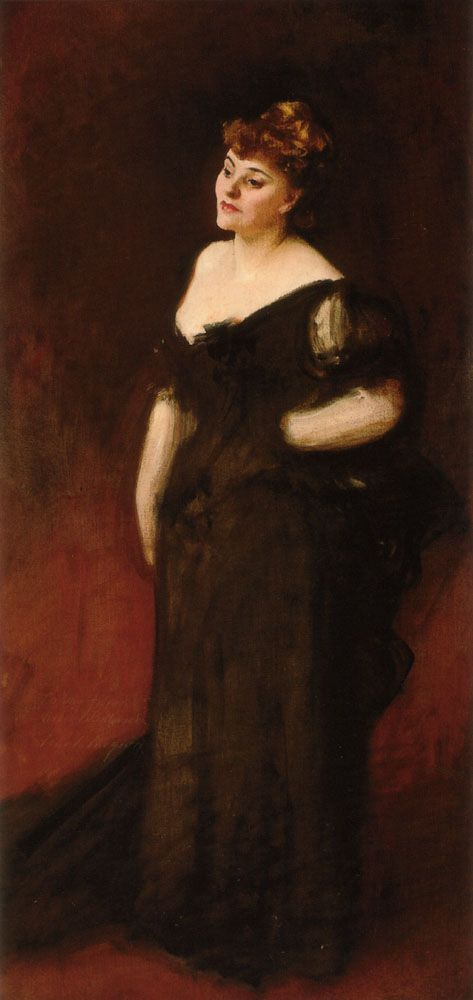 Alice Sidonie Vandenburg, Mrs. Harry Vane Milbank (Albert de Belleroche's mother) |
|
|
|
|
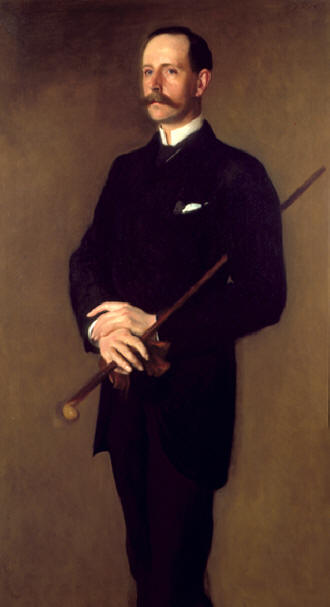 Brigadier General Archibald Campbell Douglas |
|
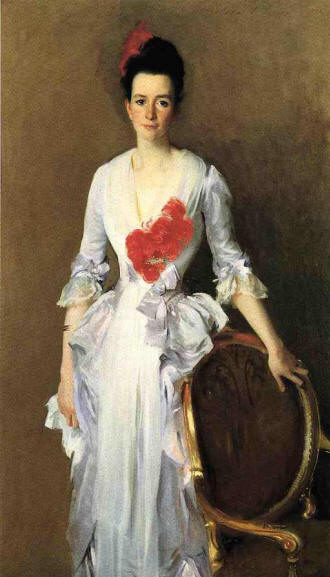 Isabelle Parrott, Mrs. Douglas Dick |
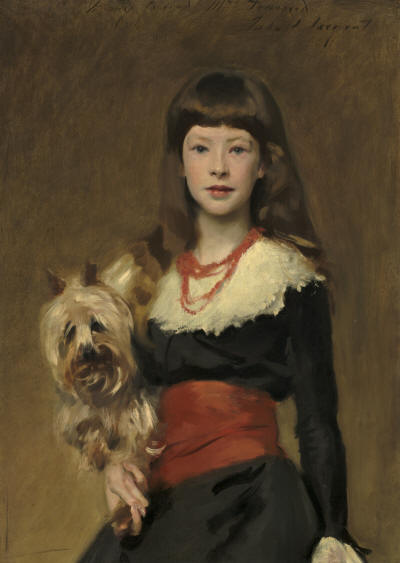 Eleanor Beatrice Townsend (1870–1884) died of peritonites at age 14. |
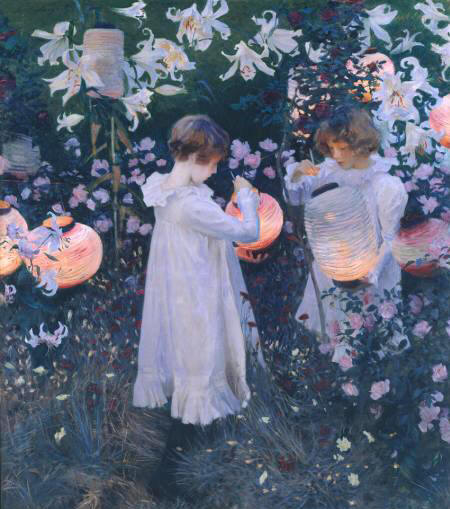 Carnation, Lily, Lily, Rose (Polly and Dorothy Barnard) |
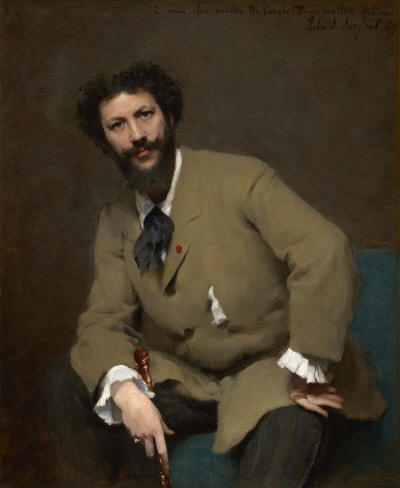 Carolus-Duran |
|
|
||
|
|
|
|
|
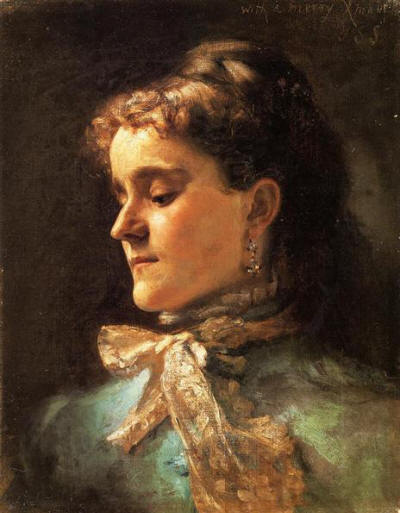 Emily Sargent |
|||
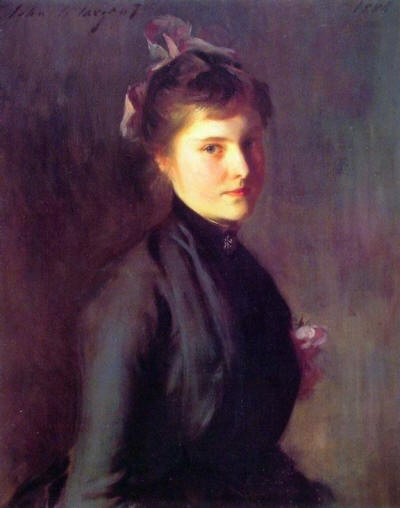 Violet Sargent |
|
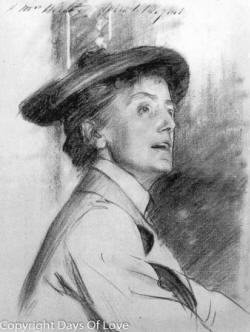 Ethel Smyth |
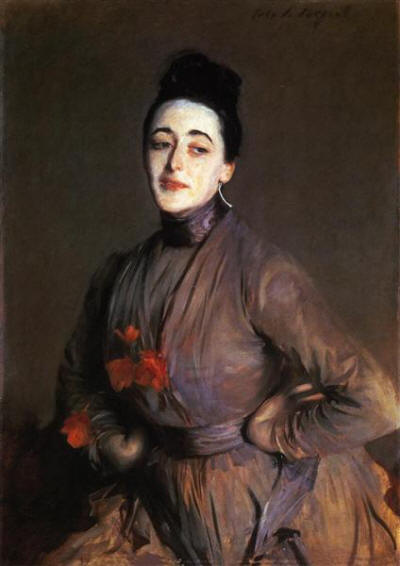 Flora Priestly |
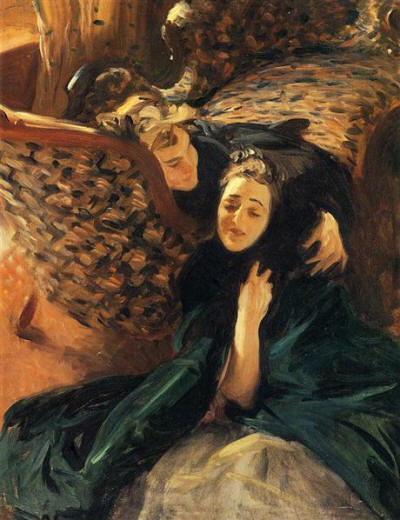 Violet Sargent and Flora Priestley |
|
||
|
|
|
|
|
 Gladys Spencer-Churchill, Duchess of Marlborough |
|
|
|
|
|
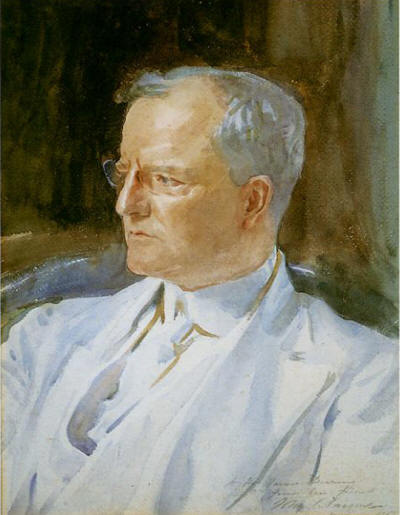 James Deering |
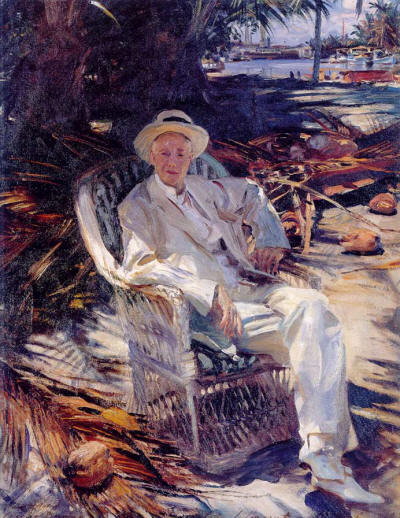 Charles Deering |
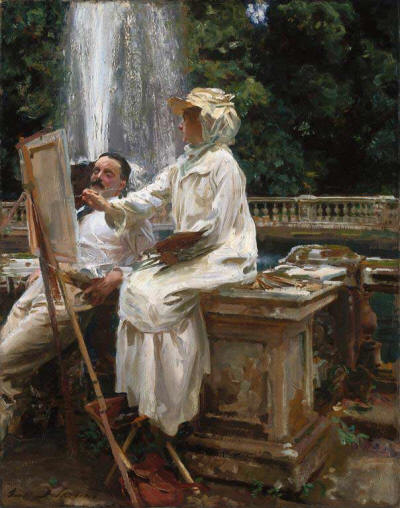 Jane Emmet de Glehn and Wilfrid de Glehn |
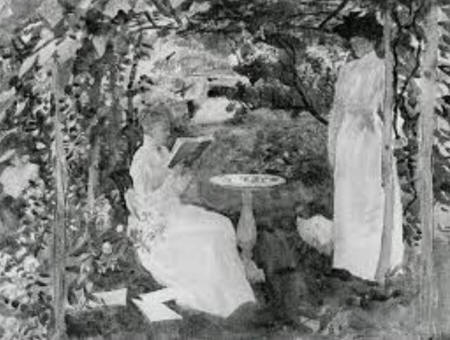 Louisa and Katharine Peabody Loring |
|
||
|
|
 Leonora von Stosch, Lady Speyer |
|
|
,_by_John_Singer_Sargent.jpg) Elfrida Marjorie Eden, Countess of Warwick (Charles Greville, 7th Earl of Warwick aka Michael Brooke's mother) |
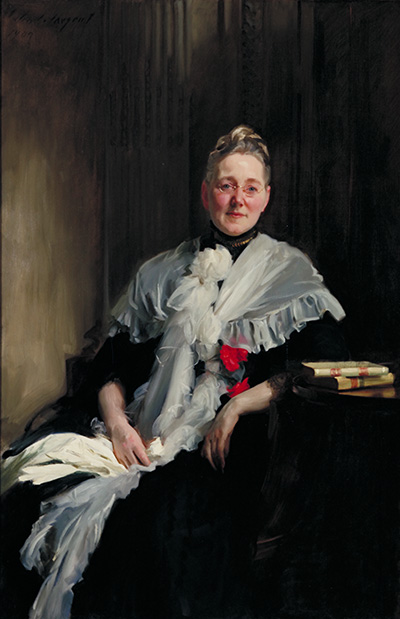 Mary E. Garrett |
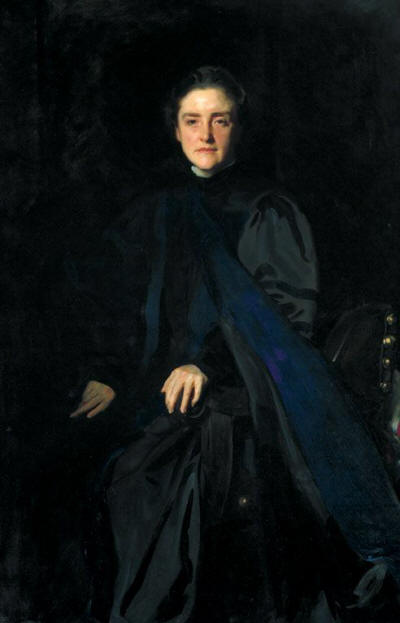 M. Carey Thomas |
|
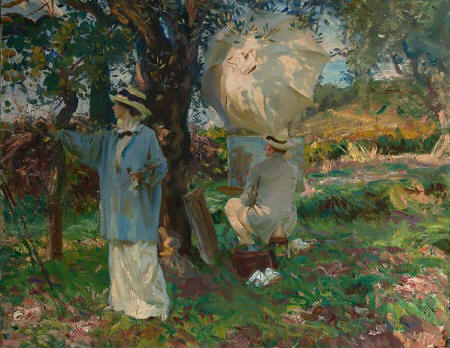 Mary Foote |
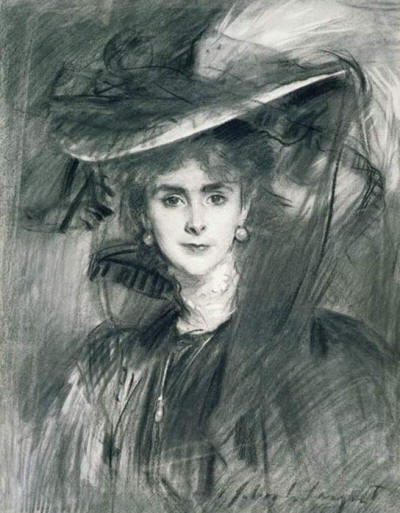 Olga de Meyer |
|
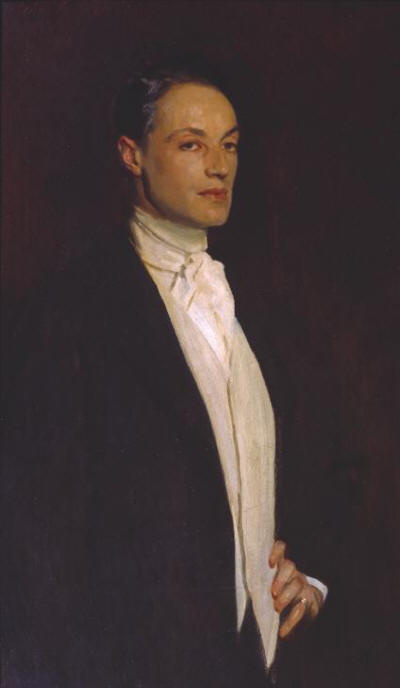 Sir Philip Sassoon |
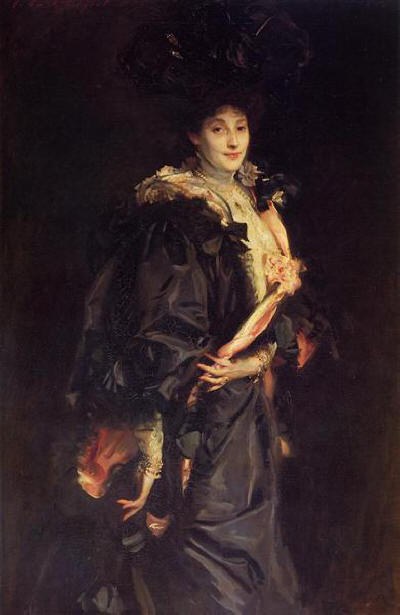 Lady Sybil Sassoon, Marquise of Cholmondeley |
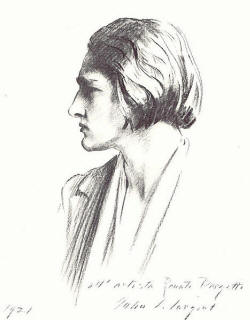 Renata Borgatti |
||
|
|
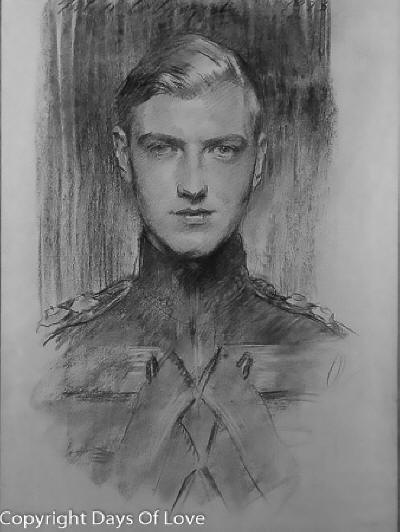 Robert Gould Shaw III |
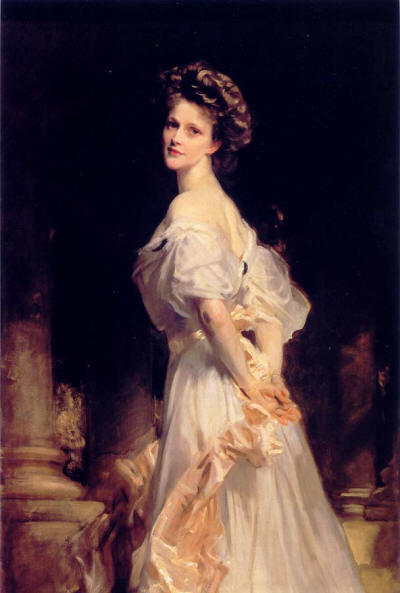 Nancy Langhorne, Viscountess Astor (Robert Gould Shaw III's mother) |
|
|
|||
|
|
|
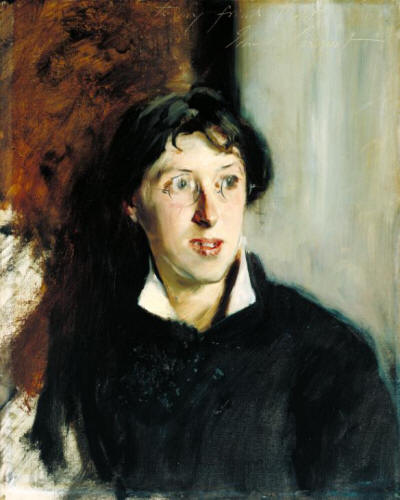 Violet Paget aka Vernon Lee |
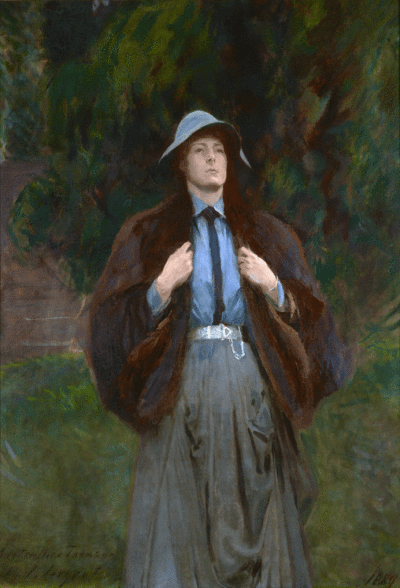 Clementina Anstruther-Thomson |
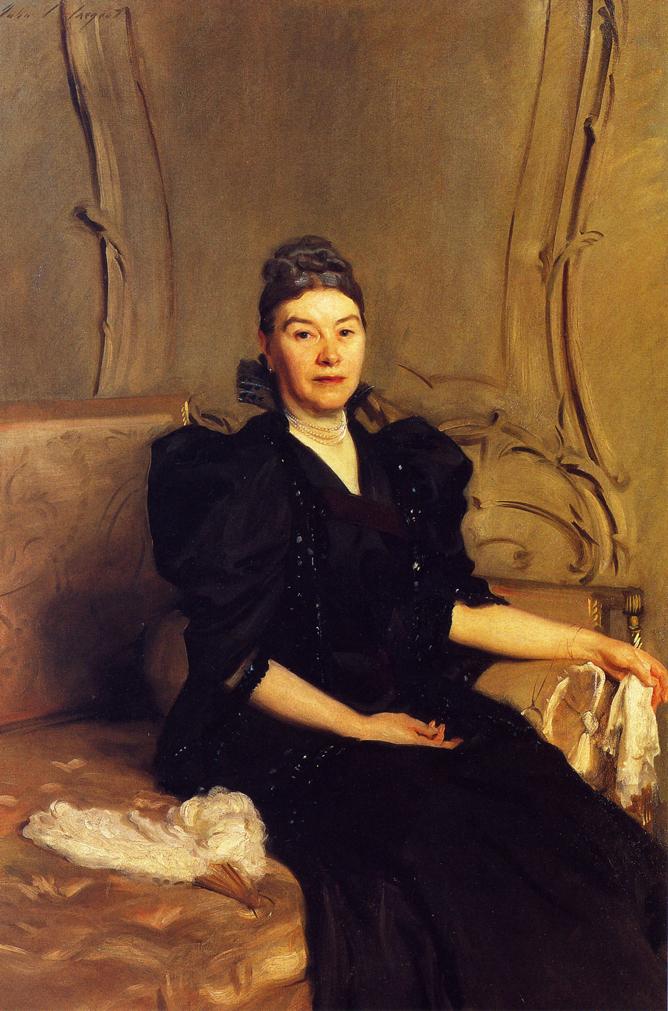 Mrs. Graham Moore Robertson (W. Graham Robertson's mother) |
|
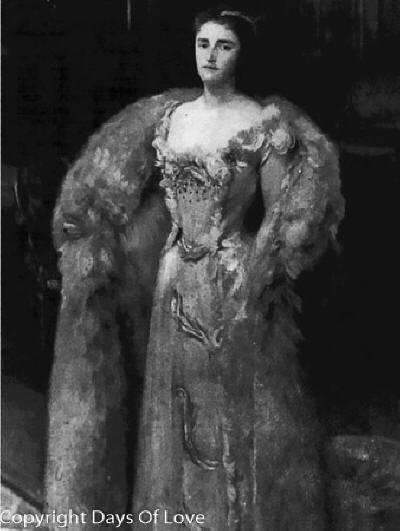 Winnaretta Singer |
My published books: